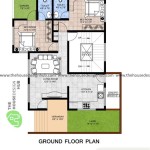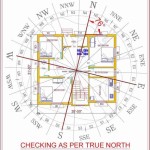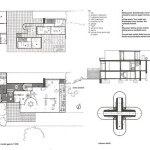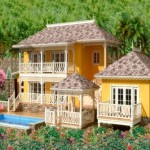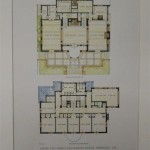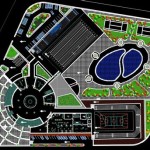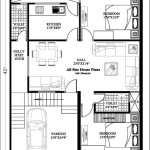Unlocking the Potential of Tiny Living Home Plans
Tiny living has surged in popularity, driven by desires for financial freedom, environmental consciousness, and minimalist lifestyles. This movement embraces smaller, more efficient dwellings without sacrificing comfort or functionality. Careful planning is crucial to maximizing space and ensuring the tiny home meets the specific needs of its inhabitants. This exploration delves into the essential aspects of tiny living home plans, providing insights into design considerations, legal aspects, and the practicalities of downsized living.
Key Considerations When Choosing Tiny Home Plans
Selecting the right plan is the cornerstone of a successful tiny living experience. Several factors contribute to this decision, each impacting the final outcome and livability of the tiny home.
1.
Lifestyle Needs:
Thorough self-reflection concerning lifestyle needs forms the foundation of plan selection. Consider daily routines, hobbies, and the number of occupants. A couple with a passion for outdoor activities will have different needs than a single individual working remotely.2.
Space Optimization:
Tiny homes demand innovative space-saving solutions. Look for plans that incorporate multi-functional furniture, clever storage options, and efficient layouts that maximize every square foot. Vertical space utilization is often key.3.
Budget Constraints:
Establishing a realistic budget is paramount. Factor in not only the cost of the plans but also materials, construction, appliances, and potential permit fees. Researching various building methods, such as DIY versus professional construction, can reveal cost-saving opportunities.4.
Climate Considerations:
The local climate significantly influences design choices. Insulation, window placement, and heating/cooling systems must be appropriate for the region’s temperature fluctuations and weather patterns. Consider energy-efficient options to minimize long-term costs.Navigating the Legal Landscape of Tiny Homes
The legal landscape surrounding tiny homes varies considerably by location. Understanding local regulations and zoning ordinances is crucial before embarking on a tiny home project. Overlooking these legal aspects can lead to complications and setbacks.
1.
Zoning Regulations:
Many municipalities have specific zoning regulations regarding minimum dwelling sizes, setbacks, and permitted uses. Researching these regulations thoroughly is essential to ensure compliance and avoid potential legal issues.2.
Building Codes:
Building codes dictate the structural integrity and safety standards of dwellings. Tiny homes must adhere to these codes, addressing areas like plumbing, electrical systems, and fire safety. Consult local authorities for specific requirements.3.
Permitting Processes:
Obtaining necessary permits is a crucial step in the legal process. This involves submitting plans, inspections, and approvals. Familiarize yourself with the local permitting process to ensure a smooth and compliant build.Exploring Different Types of Tiny Home Plans
The world of tiny home plans offers diverse options, catering to a range of preferences and lifestyles. Understanding the different types available helps individuals choose the most suitable design for their needs.
1.
Tiny Houses on Wheels (THOWs):
THOWs offer mobility and flexibility. Built on trailers, they can be relocated as needed. This type is often subject to different regulations than stationary tiny homes.2.
Foundation-Built Tiny Homes:
These homes are built on a permanent foundation, much like traditional houses. They offer greater stability and often allow for more design flexibility. They are typically subject to standard building codes.3.
Modular Tiny Homes:
Constructed in sections in a factory, modular tiny homes are transported and assembled on-site. This approach can expedite the building process and offer quality control benefits.Maximizing Functionality in Tiny Living Spaces
Designing for maximum functionality is crucial in a tiny home. Strategic planning and innovative solutions create comfortable and efficient living spaces despite limited square footage.
1.
Multi-Functional Furniture:
Incorporating furniture that serves multiple purposes is essential. Consider sofa beds, fold-down tables, and ottomans with storage capabilities. These maximize space utilization and minimize clutter.2.
Creative Storage Solutions:
Built-in storage, under-stair compartments, and vertical shelving units are invaluable in tiny homes. Maximizing every nook and cranny for storage helps maintain an organized and clutter-free environment.3.
Open Floor Plans:
Open floor plans create a sense of spaciousness in smaller dwellings. Minimizing walls and utilizing natural light enhance the perception of size and promote airflow.Essential Systems for Tiny Homes
Careful consideration of essential systems ensures the comfort and functionality of the tiny home. These systems must be appropriately scaled and integrated within the limited space.
1.
Plumbing Systems:
Compact and efficient plumbing systems are vital. Options include composting toilets, tankless water heaters, and greywater recycling systems. These choices minimize water usage and environmental impact.2.
Electrical Systems:
Wiring, lighting, and power sources must be carefully planned. Consider solar panels and other renewable energy options for off-grid living or to reduce reliance on traditional power sources.3.
Heating and Cooling Systems:
Efficient heating and cooling systems maintain comfortable temperatures throughout the year. Mini-split systems, wood stoves, and propane heaters are common options, selected based on climate and energy efficiency.Building Your Tiny Home: DIY vs. Professional
Individuals embarking on a tiny home project face the decision of DIY construction versus hiring professionals. Each approach has its own advantages and disadvantages.
1.
DIY Approach:
Building a tiny home oneself offers significant cost savings and allows for complete customization. However, it requires substantial time, skills, and knowledge of construction techniques.2.
Professional Builders:
Hiring professional builders ensures expertise and efficiency, streamlining the building process. While this approach typically involves higher costs, it can save time and ensure a higher quality build.Maintaining and Living in a Tiny Home
Living in a tiny home requires a shift in mindset and lifestyle. Regular maintenance and adaptation to a smaller living space are essential for a positive experience.
1.
Regular Maintenance:
Due to the compact nature of tiny homes, regular maintenance is crucial to prevent issues and ensure longevity. This includes cleaning, inspections, and repairs.2.
Downsizing and Decluttering:
Transitioning to a tiny home often necessitates downsizing possessions and embracing a minimalist lifestyle. Careful evaluation of belongings and thoughtful organization are key.The Future of Tiny Living and its Impact
The tiny home movement continues to gain momentum, influencing housing trends and promoting sustainable living practices. Its growing popularity suggests a shift towards more conscious and mindful living arrangements.
1.
Sustainable Living:
Tiny homes often incorporate eco-friendly features, reducing environmental impact through minimized resource consumption and energy efficiency.2.
Affordable Housing Solutions:
The affordability of tiny homes presents a potential solution to address housing challenges, offering more accessible homeownership options.3.
Community Living:
Tiny home communities foster a sense of connection and shared resources, creating alternative living arrangements focused on shared values and lifestyles.
Tiny House Floor Plans With Lower Level Beds Tinyhousedesign Design

A Three Full Bed Tiny House Design Floor Plan With Twin And Queen Upstairs No Storage Loft Plans Small

Tiny House Plans Small Floor

Pin On Casa Tixcacal 2

Tiny House Design Floor Plans

Tiny House Floor Plans 32 Home On Wheels Design

Affordable Tiny House 18 X 28 Adu In Law Cabin Guest Small Home Plans And Blueprints

10 X 20 Tiny Home Designs Floorplans Costs And Inspiration The Life

Tiny House Floor Plans Design Your

Tiny House Plans Designed To Make The Most Of Small Spaces

